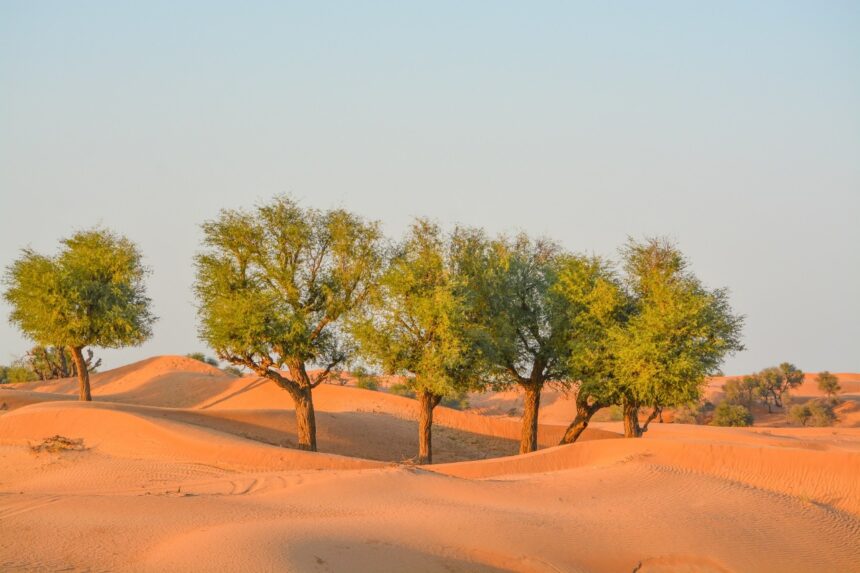The Ghaf Tree In the UAE Enhances Green space and combats climate change
In fact, the Ghaf tree is a valuable asset for its many benefits, including combating desertification.
Since it is tolerant of high salinity, weather fluctuations, and wind.
It is also well-suited for planting in sandy soil.
It is an evergreen tree, and it can live up to 120 years, it can grow up to 28 meters tall.
And it is characterized by its broad, green leaves.
Also it blooms in the spring, and produces small fruits called “khart”.
Moreover, Ghaf tree contributes to improving air quality, as a 10-year-old tree can absorb up to 34.65 kilograms of carbon dioxide per year.
Also it is a home for many wild plants and animals, providing them with shelter and habitat.
It is drought-tolerant and can absorb water from 20 meters below the ground surface, making it suitable for planting in arid regions.
UAE’s efforts to conserve the Ghaf tree include the below:
- Declaring the Ghaf as the national tree of the UAE in 2008.
- Enacting Federal Law No. 24 of 1999, which prohibits the illegal cutting, uprooting, or collection of wild plants.
- Launching several national awareness campaigns on the importance of the Ghaf tree and how to conserve it.
- Implementing numerous projects to plant it and increase their numbers.
Such as the “Perennial Tree Numbering” project launched by Dubai Municipality in 2014.
And also the “Local Agriculture Using Drones” project launched by the Ministry of Climate Change and Environment in 2020.
The Ghaf tree has great environmental and economic value.
Moreover, it plays a vital role in conserving the environment and biodiversity in the UAE.
The UAE efforts to conserve this tree are a testament to its commitment to protecting the environment and national heritage.
Read More:
Ghars UAE Initiative To Plant Over 100,000 Mangrove Trees.
Low-Carbon Techs Enhance Abu Dhabi Climate Change Strategy.
Climate Finance: A Major Focus of COP28 Summit in Dubai.
UAE Ambitious National Strategy to Face Climate Change.





